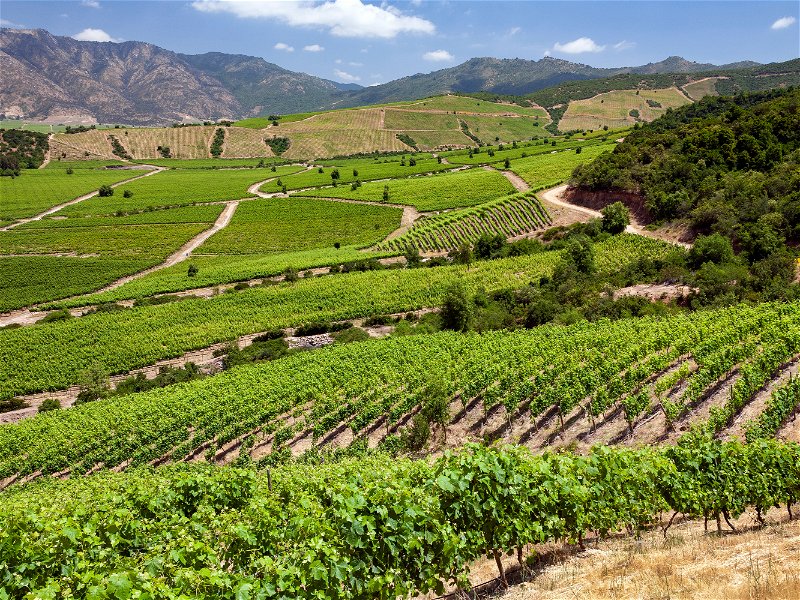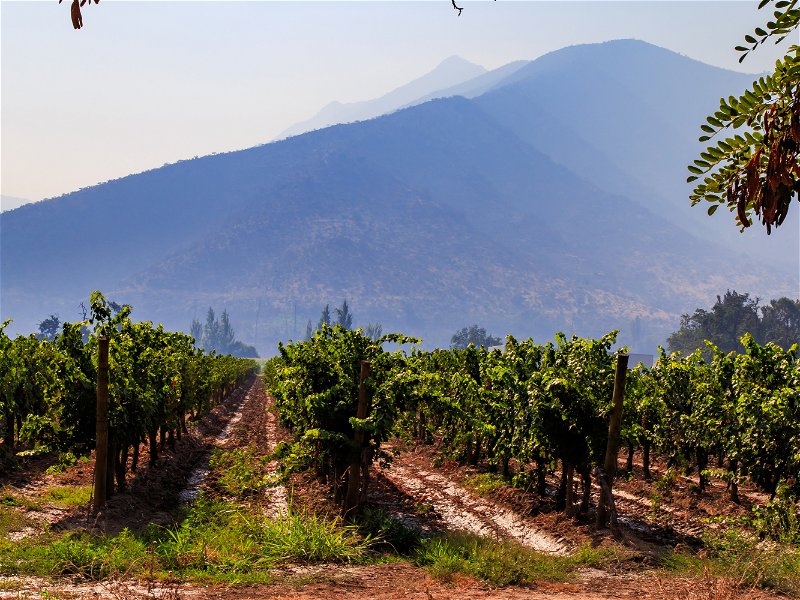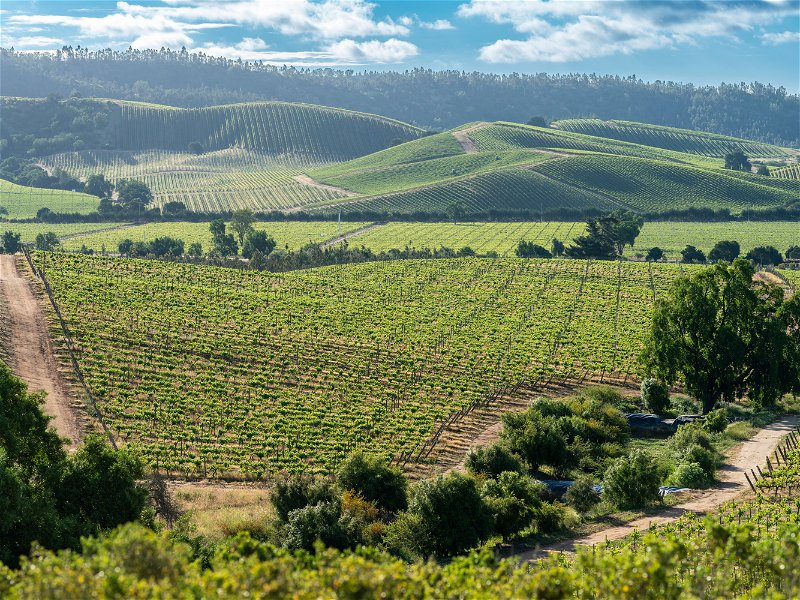Chile's geography is remarkably unique: the country is over 4,000 kilometres long but only 180 kilometres wide. The Atacama Desert borders the north; in the south, it reaches into the cold Tierra del Fuego. In the east, the monumental Andes loom, and in the west, the coastal cordilleras form the border to the Pacific. Winegrowing has been practised here since the Spanish conquests, stretching over a long valley. The nucleus lies to the south of the pulsating metropolis of Santiago, in the Central Valley, which is divided from north to south into the well-known regions of Maipo Valley, Rapel Valley, Curico Valley and Maule Valley. In the search for "cool climates" over the past 25 years, vineyards have been established in the cool Casablanca Valley or Leyda Valley as well as in the far south, for example, in Bio-Bio. Climatically, Chile benefits from an effect that can be observed along the entire American West Coast. When the air warms up inland and rises, it attracts cold air from the Pacific, which has a cooling effect on the vineyards. The cold air descending from the Andes also has the same effect, especially at night. However, the El Nino years cause problems. 210,000 hectares are under vines, mainly of international varieties such as Cabernet Sauvignon, Chardonnay, Sauvignon Blanc or Pinot Noir. The Carmenère variety occupies a unique position. This variety, which originates from Bordeaux, was considered extinct for a long time until about 25 years ago, when genetic fingerprinting proved that most Merlot plants in Chile are of the Carmenère variety. These wines have since become a flagship of the country. The share of sustainable or biodynamic viticulture is continuously increasing, and research into irrigation-free production is also showing early signs of success.
Wine Regions in Chile
Maipo Valley
The Maipo Valley surrounds the country's capital, Santiago, forming the centre-piece of this wine-growing nation. The best areas are considered outstanding, especially when it comes to red wines. The valley is probably also Chile's oldest wine-growing region, the Spanish conquistadors were...
Casablanca Valley
The small Casablanca Valley marks a turning point in Chile's viticultural history. Whereas until the 1980s most vineyards were planted in the warm valleys south of the capital Santiago, the Casablanca Valley was discovered to have an extremely cool climate by Chilean standards. The Casablanca...
Central Valley
The Colchagua Valley is probably Chile's most famous wine-growing region and the home of legendary Chilean winemakers such as Montes and Casa Lapostolle. Clos Apalta, one of the first real premium vineyards, is also located here. The wines under this name achieve top prices that are close to those...




